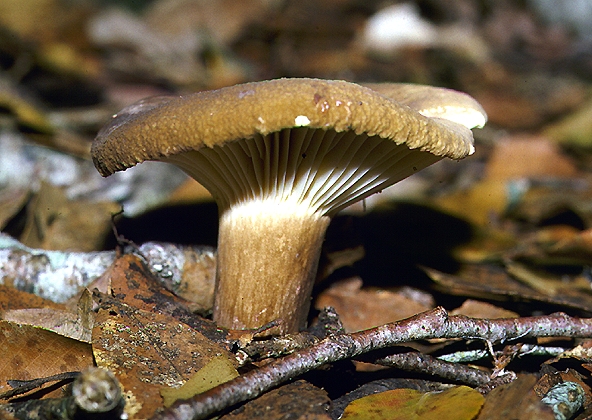
Lactarius aff. sepiaceus McNabb

Common name: None.
Description: The caps are up to 8 cm in diameter and are at first convex but then become shallowly funnel-shaped. The surface is smooth, dry, finely velvety and dark sepia brown. The gills are decurrent, white and slowly turn brown on bruising. The stem is up to 6 cm long and 1 cm thick, dark sepia brown and finely velvety. All parts of the fungus bleed a white, milky fluid (latex) when damaged.
The spores measure 711 × 610 µm and are globose, covered with a raised network and are colourless but white to cream-tinted in mass.
Substratum: On soil or moss among Nothofagus moorei (Antarctic Beech). Usually solitary or in twos or threes.
Distribution: So far this species has been recorded from Queensland and New South Wales, but it probably occurs wherever beech is present.
Notes: This fungus appears very close to but is not the same as the New Zealand species described by McNabb. In the New Zealand taxon, the gills have a brown edge and are not recorded as bruising brown. The Australian fungus is a very beautiful and unmistakable find in beech forest.
